At The UnSchool, we have been anti-celebrating Earth Overshoot Day for several years now. It’s been fascinating to watch the significant rise in collective awareness of just how urgent the need to redesign our economy, production processes and consumption practices is if we are to reverse the destruction of ecosystems, climate and communities.
It was in the 1970s when we really started to understand that human activity has significant impacts on the Earth. Over the last four decades, the scientific community has invested significantly in developing rigorous methods of examining the causal relationship between human activities and ecological impact.
Three scientific methods help us all understand our own individual impacts, collective consumption effects, and the ecological boundaries that Earth has.
Today we are sharing three leading scientific methods for assessing impacts that allow us to gain insights at the personal, product and economic level to go from impact to action:
Ecological Footprints and Earth Overshoot: Ecological Footprints can be used to assess individual lifestyle choice impacts, as well as collective city, country and global impacts on biodiversity. This method is used to determine when Earth Overshoot Day occurs, which is the date each year in which we exceed Earth's capacity to sustain us, based on collective consumption habits. And for many parts of the world, that is today (Aug. 1st)!
Planetary Boundaries: Developed by the Stockholm Resilience Centre, the Planetary Boundaries method looks at the Earth’s limits in relation to 9 key planetary systems and warns of the snowball effects that could occur if we exceed these. The science is used to show global health and has included such methods as the Doughnut Economy.
Life Cycle Assessment: A method of assessing the whole-of-life environmental impacts of a product or service, Life Cycle Assessments look at the interactions between all aspects of a product’s life in relation to its actions in the economy. This method is now an underlying element of environmental product declarations and is also the method towards using digital product passports to communicate sustainability across value chains.
In this article, we’ll explore each of these in more detail. If you are interested in diving deeper into these methods in relation to your business decision-making, we offer professional training for these concepts.
Check out our online courses “Ecological Footprint Methods” and “Life Cycle Assessment and Thinking”.
Ecological Footprints and Earth Overshoot
Every year humanity consumes more resources than the Earth can replenish. This is the definition of unsustainability. As we go into ecological deficit year after year, we consume the resources needed to maintain a healthy system that can sustain and carry all living things on this beautiful planet.
Each year on World Environment Day (June 5th), the Global Footprint Network announces when Earth Overshoot Day falls in the current calendar year. The date moves around depending on many factors, but the method of assessment essentially looks at the global biocapacity of the Earth and the collective consumption rate of humans. Then a date is calculated for when we have used up the available resources for that year. After that date, we are in ecological deficit, eating into the future generation’s resources.
“Earth Overshoot Day marks the date when humanity’s demand for ecological resources and services in a given year exceeds what Earth can regenerate in that year. We maintain this deficit by liquidating stocks of ecological resources and accumulating waste, primarily carbon dioxide in the atmosphere.
”
In the 1970s, it typically fell around New Year’s Eve (Dec. 31st). That was the last time we lived within Earth’s carrying capacity; now, Earth Overshoot Day is often held in July or August, which means we use up all our allocated resources just over halfway through the year.
This year, Earth Overshoot Day falls on August 1, 2024. The chart below shows how the date has moved up earlier and earlier each year since it was first calculated in 1971.
The Ecological Footprint Methodology allows for an assessment of the impacts of an individual, product, company, country, and even the entire planet. Developed in the 1990s, it’s a well-respected means of assessing and understanding the ecological impacts of actions, as well as providing the base data for the bi-annual Living Footprint Report.
The Footprint Method looks at many “impact categories,” which are areas of our daily lives that impact the planet — like the food we eat, how we move around our communities, and the kinds of houses we live in. All our actions have impacts, and where we live also changes the size of our footprint as different countries have different amounts of biologically productive land. If you live in a colder country, for example, you often have to import food from a warmer country to accommodate your population’s needs.
This is measured against biocapacity, which is the ability of areas to continuously renew resources or be regenerated. Carrying capacity refers to the ability for a country or ecosystem to sustain or support the population that lives there. This can be for humans and non-human species as well. This term comes from biology and refers to the number of organisms that can survive to the resources within an ecosystem. Ecosystems can't sustain themselves for too long when an overpopulation exploits all the available resources. The result is population decline or collapse; a population can only grow until it reaches the carrying capacity of the environment.
Resource requirements are measured through global hectares (GHA), and a country or city is considered unsustainable if its demand for natural resources is greater than what it can supply itself. Most modern economies are unsustainable.
The Ecological Footprint method allows us to see how individual actions accumulate to have big impacts on the natural systems that sustain us. When you do your own ecological footprint, you will be asked to look at your lifestyle choices, which will then draw on the following impact areas:
The concept allows an average to be made: if everyone on the planet lived as you do, how many planets would we need to sustain them? The global average right now is 1.7 planets.
Since the 1980s, we have rapidly increased the amount of natural resources that are extracted, used, and wasted; year-on-year, this gets worse. This means we have a deficit, so we have to find innovative ways to meet our human needs while maintaining and respecting the life support systems that we currently have on Earth.
One simple goal is to align the red line on this graphic with the green, which represents the Earth's carrying capacity. From this methodology, you can see how we started to expand our understanding of humanity's actions impacting the Earth's ecosystems, which leads us to the next important method, planetary boundaries.
Planetary Boundaries
The planet is a complex interdependent system with limitations or boundaries. The atmosphere’s edge is one reasonably obvious boundary, but research conducted by the Stockholm Resilience Centre has defined a set of nine planetary boundaries that are critical to the health and well-being of the planet and, once exceeded, threaten Earth's ability to sustain life.
The 9 planetary boundaries include:
Stratospheric ozone depletion
Loss of biosphere integrity (biodiversity loss and extinctions)
Chemical pollution and the release of novel entities
Climate change
Ocean acidification
Freshwater consumption and the global hydrological cycle
Land-system change
Nitrogen and phosphorus flows to the biosphere and oceans
Atmospheric aerosol loading
These demonstrate what we need from nature in order to continue developing and thriving. This planetary boundaries concept shows that there are limits to our actions.
Late in 2023, a team of scientists was able to quantify the 9 processes that regulate the resilience and stability of the Earth as an entire living system for the first time.
The concept was first developed by Johan Rockström of the Stockholm Resilience Centre and a team of international scientists in 2009. Rockström says that we have raced past 6 of the 9 planetary boundaries, these being: climate change, biodiversity, deforestation and nitrogen/phosphorus cycle.
“Boundaries are interrelated processes within the complex biophysical Earth system. This means that a global focus on climate change alone is not sufficient for increased sustainability. Instead, understanding the interplay of boundaries, especially climate, and loss of biodiversity, is key in science and practice. ”
Watch Rockstrom explain this in detail:
This work also greatly influenced the development of the Doughnut Economics framework developed by economist Kate Raworth.
Life Cycle Assessment
Life Cycle Thinking is based on the methodology of product environmental impact assessment known as Life Cycle Assessment (LCA). LCA is the scientific process of understanding what impacts occur as a result of the materials/products that move through our economy (it is also sometimes referred to as Life Cycle Analysis, depending on the country you are in).
LCA is a complex, deeply detailed process of breaking down all of the inputs that go into making something exist and examining the outputs that result. The European Union states that LCAs are the best framework for assessing the environmental impacts of products.
“LCA is the factual analysis of a product’s entire life cycle in terms of sustainability. Every part of a product’s life cycle – extraction of materials from the environment, the production of the product, the use phase and what happens to the product after it is no longer used – can have an impact on the environment in many ways. With LCA, you can evaluate the environmental impacts of your product or service from the very first to the very last or from cradle to grave. ”
Data is a crucial component of an LCA, and the outcomes are often as good as the data used for the assessment. As part of the development of an LCA, an inventory is itemized and used to collect data.
Functional Units, Goal, and Scope of a LCA
Because LCA has a standardized process of assessment, it makes it reliable and transparent. The standards provided by the International Organization for Standardization (ISO) are ISO 14040 and 14044; they describe the four main phases of an LCA:
Goal and scope definition
Inventory analysis
Impact assessment
Interpretation
Firstly there is defining the functional unit of what you are assessing. Everything created can be defined by a primary functional unit that often can be quantified as a certain number of units. For coffee cups, it’s carrying a certain amount of hot liquid (the hot part is important as it dictates material quality), for a pen it’s writing x number of pages of text, for transporting humans on roads you could have a car, bus or bike, so to normalize the functional unit across these, you would define it as driving x number of kilometers per day. The LCA always has a clearly defined functional unit that each product being assessed can perform at the same level so that apples are being compared with apples and not apples to bananas.
A system boundary is then defined. This is a simple explanation of what processes will be included in the study and what will be excluded.
Then a goal and scope is outlined. This essentially is the framework for what is being studied. The scope sets the boundaries for assessment. So, if you wanted to look at coffee cup options, the scope would define all the processes needed to transform materials into a usable cup and not look at the coffee or the milk or any of the things that go inside it, as it's not part of the goal of the assessment. The goal would outline exactly what is being looked at, the functional unit and why it is being assessed.
After that, data is collected and assessed and the findings reported. Usually, certain impact categories are selected. and these are then shown as comparisons against the different products assessed.
This is the image that the ISO standard includes to describe the core stages of an LCA:
Scrutinizing LCAs
When reviewing an LCA study, consider who conducted it, where the data came from, and what the goal and scope are (this is always outlined in an LCA). Also, check for the commissioner's vested interests and what functional unit was used for comparison.
Additional factors, like the age of the study and what variables may not have been taken into account if it’s an older study, are also important to determine the quality of the data.
The degree of detail that goes into conducting a LCA is pretty intense and rightly should be as thorough as possible. This detail results in more clarity of what’s going on across the entire life of a product, rather than just one area.
Published LCAs allow the wider community to explore the findings, uncover new insights into industrial processes and understand the environmental impacts of everyday products and service delivery.
Connected to LCAs are the use of various forms of the data in other standards, such as ISO 14024 (Type I label), a voluntary, multiple criteria-based, ISO 14021 (Type II label) for any written or spoken environmental claim, ISO 14025 (Type III label) for Product Category Rules (PCRs) and Environmental Product Declarations (EPDs). There is also the advancement of digital product passports in the EU, which should include LCA data.
Remember that LCAs should pretty much always be peer-reviewed if the resulting information is to be publicly published. To check out examples and search for LCAs, type SCHOLAR into google (scholar.google.com) and it will come up. Once you are in there, search for things like Paper Cup vs Plastic Cup LCA and you will find quite a bit of data in the abstracts that are publicly available. The UN has a global database of life cycle data you can access here.
Life Cycle Thinking is a streamlined version of thinking about the full life cycle that anyone can do. We explored it in detail in this previous article, and if you want to dive into it in more detail, check out our dedicated “Introduction to Life Cycle Thinking” online course here.
Anti-Celebrate by Taking Action this Earth Overshoot Day
The Global Footprint Network maintains a fantastic website dedicated solely to Earth Overshoot Day at overshoot.footprint.org. There you’ll find more information about the history of Earth Overshoot Day, resources for calculating your footprint, and the Power of Possibility platform, which “highlights many ways we can improve our resource security in five key areas (healthy planet, cities, energy, food, and population).”
Another way to take action is by checking out the everyday lifestyle choices you can make to reduce your footprint with our UN collaboration, the Anatomy of Action. Finally, don’t miss the free courses provided by the UN’s Life Cycle Initiative here.
Looking for online sustainability training?
To learn more about ecological footprinting, check out our online course “Ecological Footprint Methods” on our Circular Futures online learning platform.
To gain skills in LCA and apply life cycle thinking to product design and development, check out “Life Cycle Assessment and Thinking”, which is also on our Circular Futures sustainability training platform.
Each of these courses is just $59 USD and comes with 365 days of access, downloadable worksheets and templates, and a certificate of completion that you can share with your network.
UnSchool Online has a full course catalog of choices, including our popular Sustainability deep-dive course, also available through our brand new All Access Passes.

























